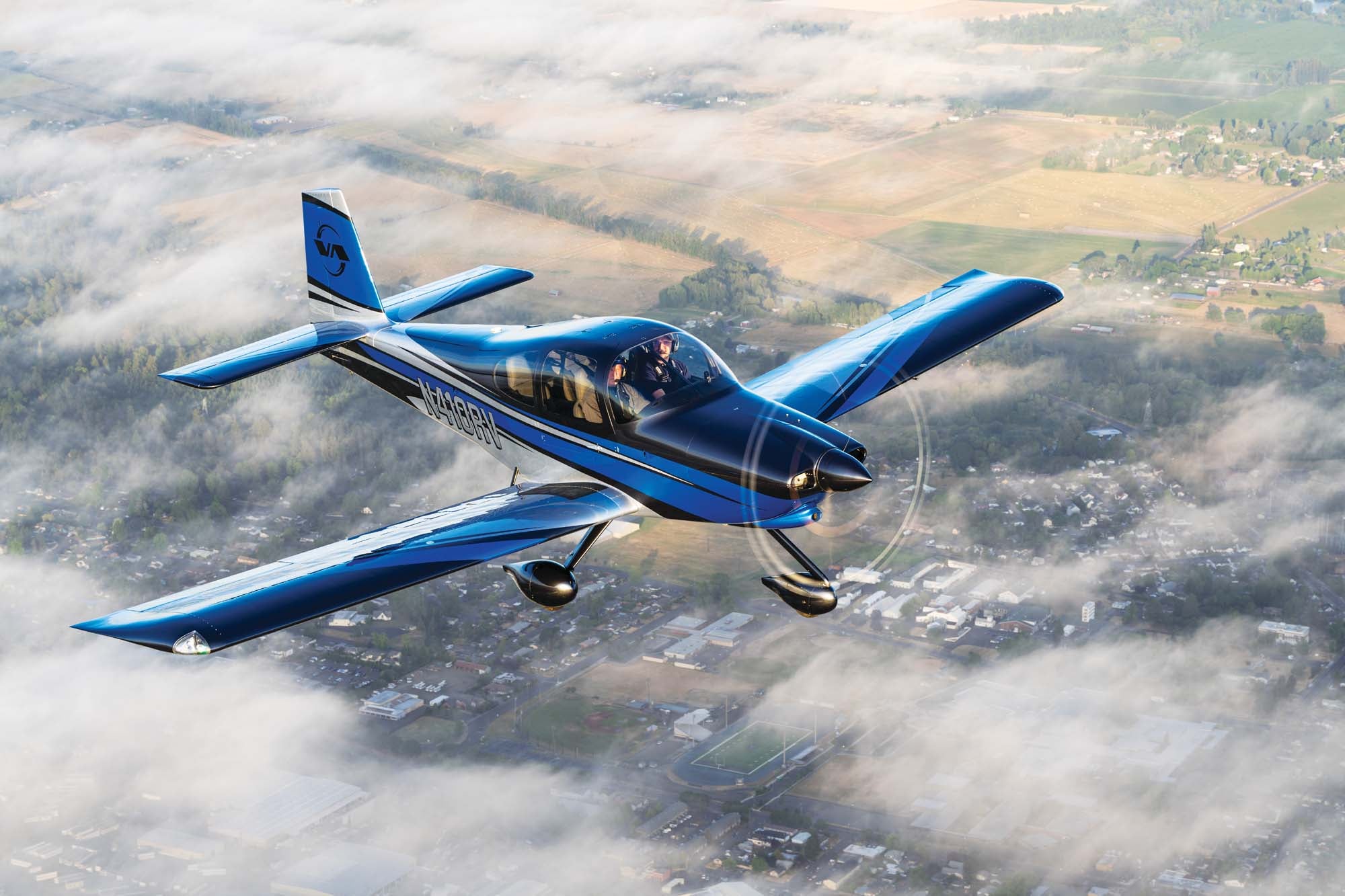 It’s hard to question the success of the Van’s RV-10. Since its introduction in 2003, it has seen steady sales growth and positive builder feedback. Right now, there are more than 1000 RV-10s flying—that’s actually the fourth fewest of all the RV models, but it’s also the most expensive to build. Even so, it and the RV-14 are by far the best sellers over the last few years. While some doubted that Van’s should ever enter the four-place market, there’s no question it was a good decision, giving dedicated RV builders a choice of a family airplane and tempting a lot of pilots over from certified airplanes. Those pilots pined for quick, efficient, mainstream transportation for their families—the RV-10 provided it.
It’s hard to question the success of the Van’s RV-10. Since its introduction in 2003, it has seen steady sales growth and positive builder feedback. Right now, there are more than 1000 RV-10s flying—that’s actually the fourth fewest of all the RV models, but it’s also the most expensive to build. Even so, it and the RV-14 are by far the best sellers over the last few years. While some doubted that Van’s should ever enter the four-place market, there’s no question it was a good decision, giving dedicated RV builders a choice of a family airplane and tempting a lot of pilots over from certified airplanes. Those pilots pined for quick, efficient, mainstream transportation for their families—the RV-10 provided it.
And like any popular kit airplane, the RV-10 prompted a sizable support network beyond the factory. While Van’s has always been good with the basic kit, it took awhile for an ecosystem of accessories and modifications to emerge. But it did. Today’s builders have myriad choices for things like cowlings, propellers, interiors and other alterations to the basic design. Walk the rows at AirVenture and it’s unlikely you’ll see a basic, bone-stock RV-10. Each will tend to reflect its builder’s taste and willingness to spend money.
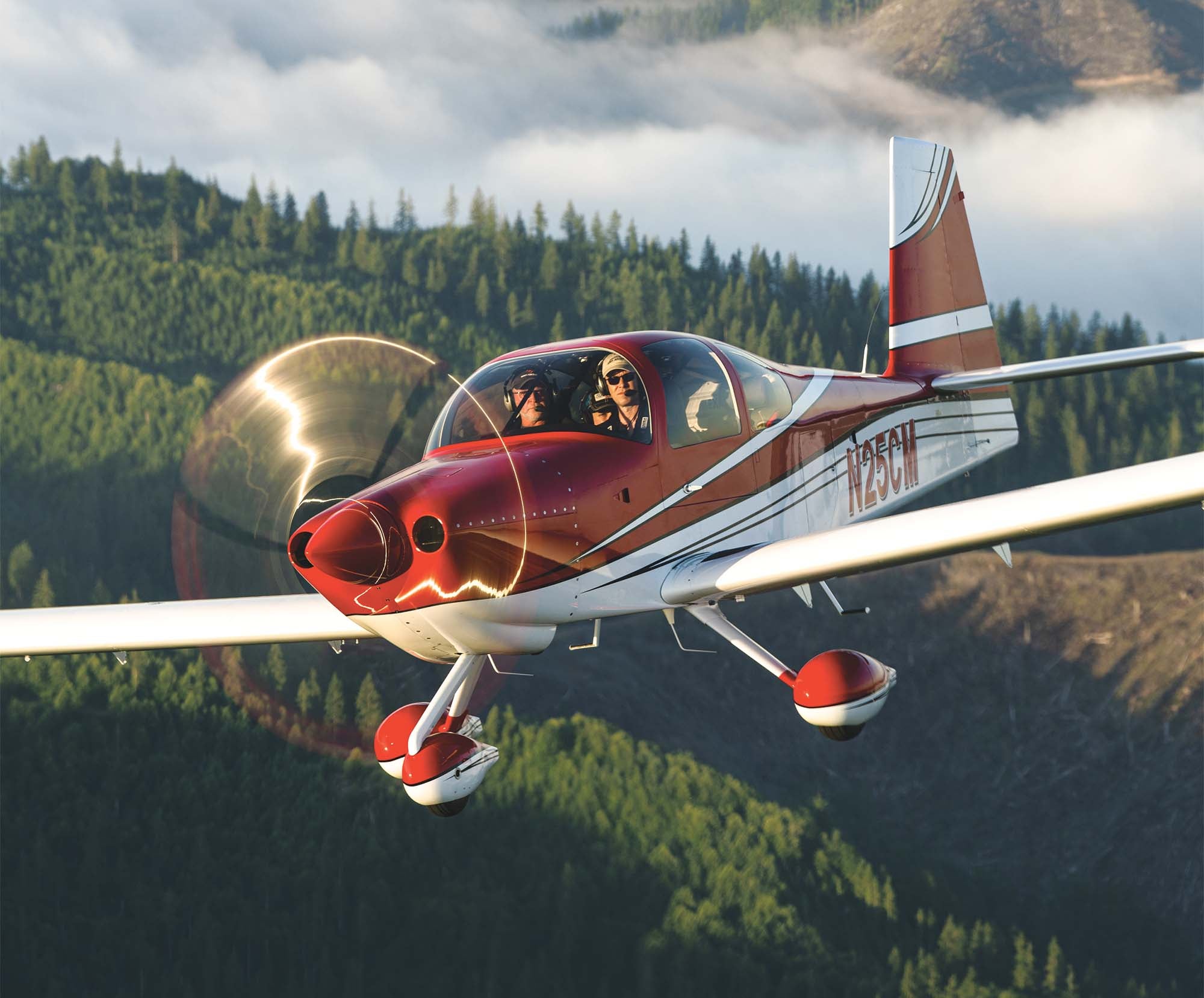
The Original
Which puts N410RV in a tough spot. As the prototype and familiar factory demonstrator aircraft, the formerly yellow-and-white RV-10 was modestly equipped. It was upgraded in 2016 with a full Garmin G3X Touch suite but the interior reflected its earnest (but vitally important) roots as both a prototype and factory demonstrator. When we brought our columnist Myron Nelson to fly with Mark Easton, whose “fully modern” RV-10 was on our November 2021 cover, he noted, “I would be lying if I didn’t say some aspects of the demonstrator struck me as less than impressive, especially the Spartan interior dressing and rather simple instrument panel.” But he and the other thousand or so RV-10 builders were able to see past that and recognize the goodness of the airplane itself. And by the time Easton had begun building in 2016, the aftermarket for the RV-10 was really gaining momentum.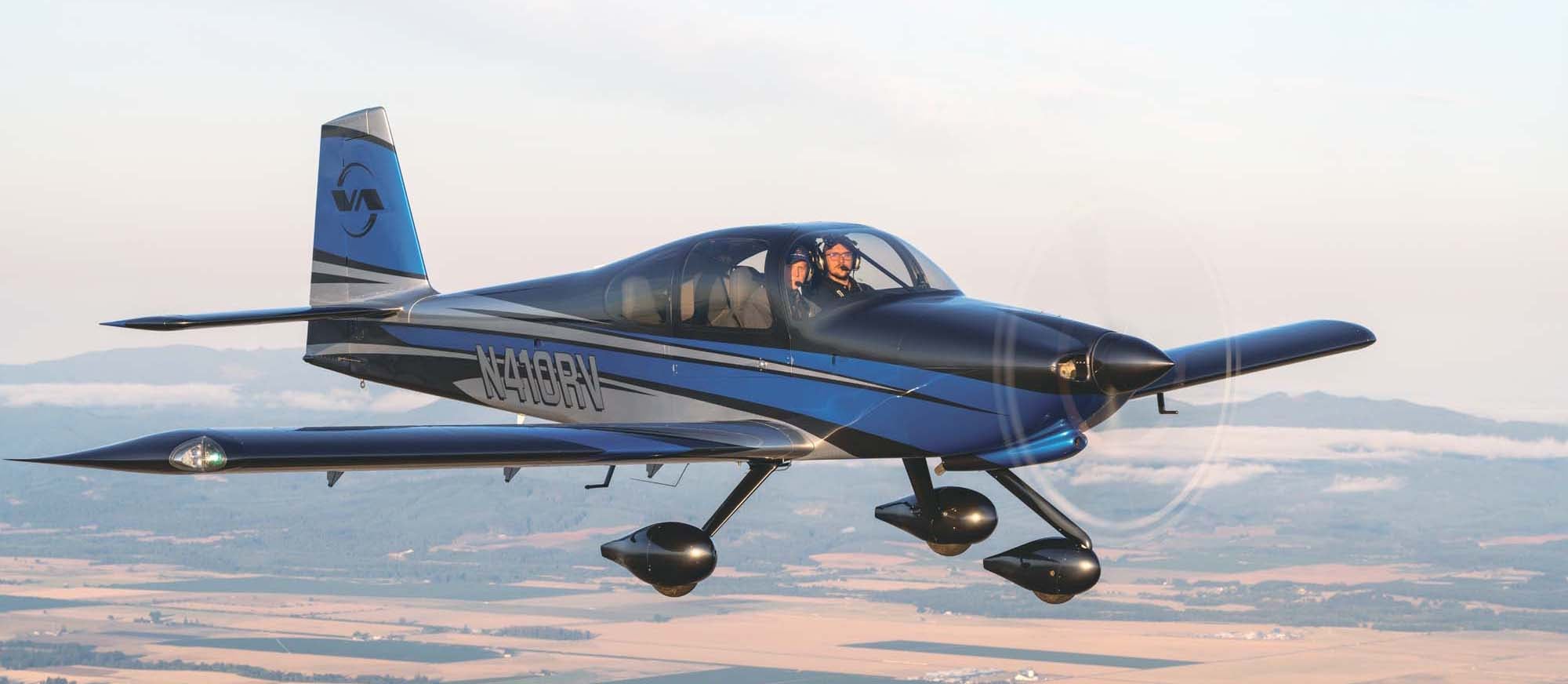
So it’s definitely time for Van’s Aircraft to get aligned with builder sentiment. There are, however, good reasons they haven’t until now, partly that builders were already doing some of the demo work with their own highly spec’d 10s but also that there were more important items on the agenda, first with trying to catch up with the surge of sales around COVID, developing the RV-15 and then focusing on the recovery from Chapter 11 bankruptcy protection that mercifully ended this year.
In the weeks leading up to AirVenture, Van’s new management team, headed by Mikael Via as the no-longer-interim CEO, was still focused on recovering the business (and has significant work yet to do) but also realized it needed something more than the same-old to show at Oshkosh. The decision had already been made to leave the engineering prototype RV-15 at home, so the task of refurbishing one of the factory RV-10s came to the top of the list. The project fell to Operational Excellence Manager Sam Ozenbaugh.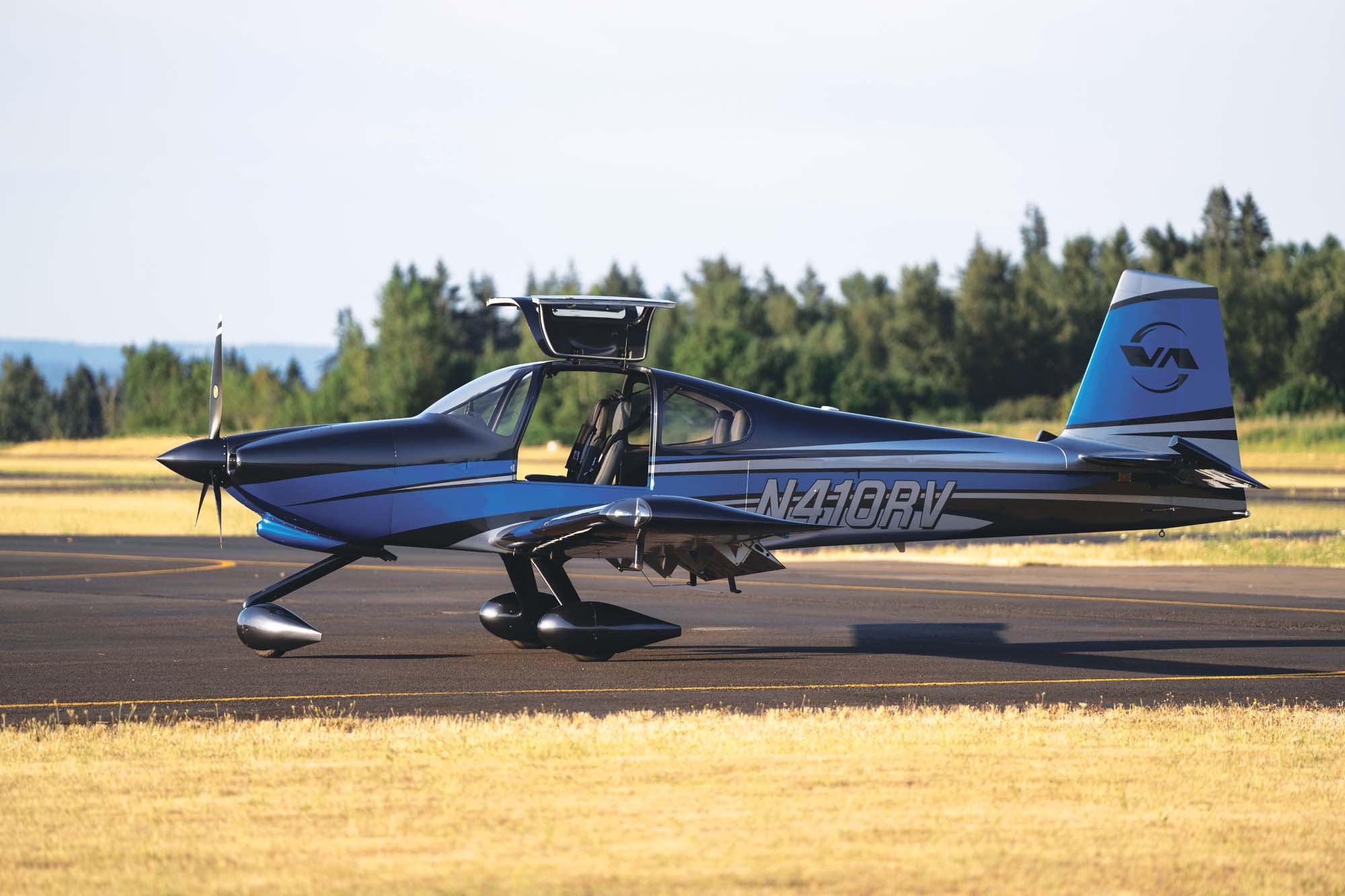
The Priorities
As mentioned, a key goal was, as Sam says, “to show the type of airplanes that a customer can build. Another goal is to show our customers that we are focusing on improving our quality, both with our products and with our customer service.” So work began on N410RV, gutting the interior and performing a considerable tidying up of the bodywork and systems. However, the Lycoming IO-540 and the entire firewall-forward configuration was left unchanged, in part for reasons of time and in part because it already worked really well as the engine cooling is good and few have serious complaints about the RV-10’s baseline performance.
Two of the most visible changes are right up front. (Past the modern paint scheme, which was penned by Evoke Aviation and rendered by in-house painters at Van’s.) Hartzell’s latest three-blade Raptor composite prop replaces the aluminum blended-airfoil two-blade prop that was a stalwart of mid-2000s builds. Adding another blade does not seem to have affected cruise performance, according to the Van’s team, but is smoother and might have some takeoff and climb benefits. Testing has really just begun as this is written so better comparisons will have to wait, but the initial impressions are positive, as you might expect from a much more modern propeller.
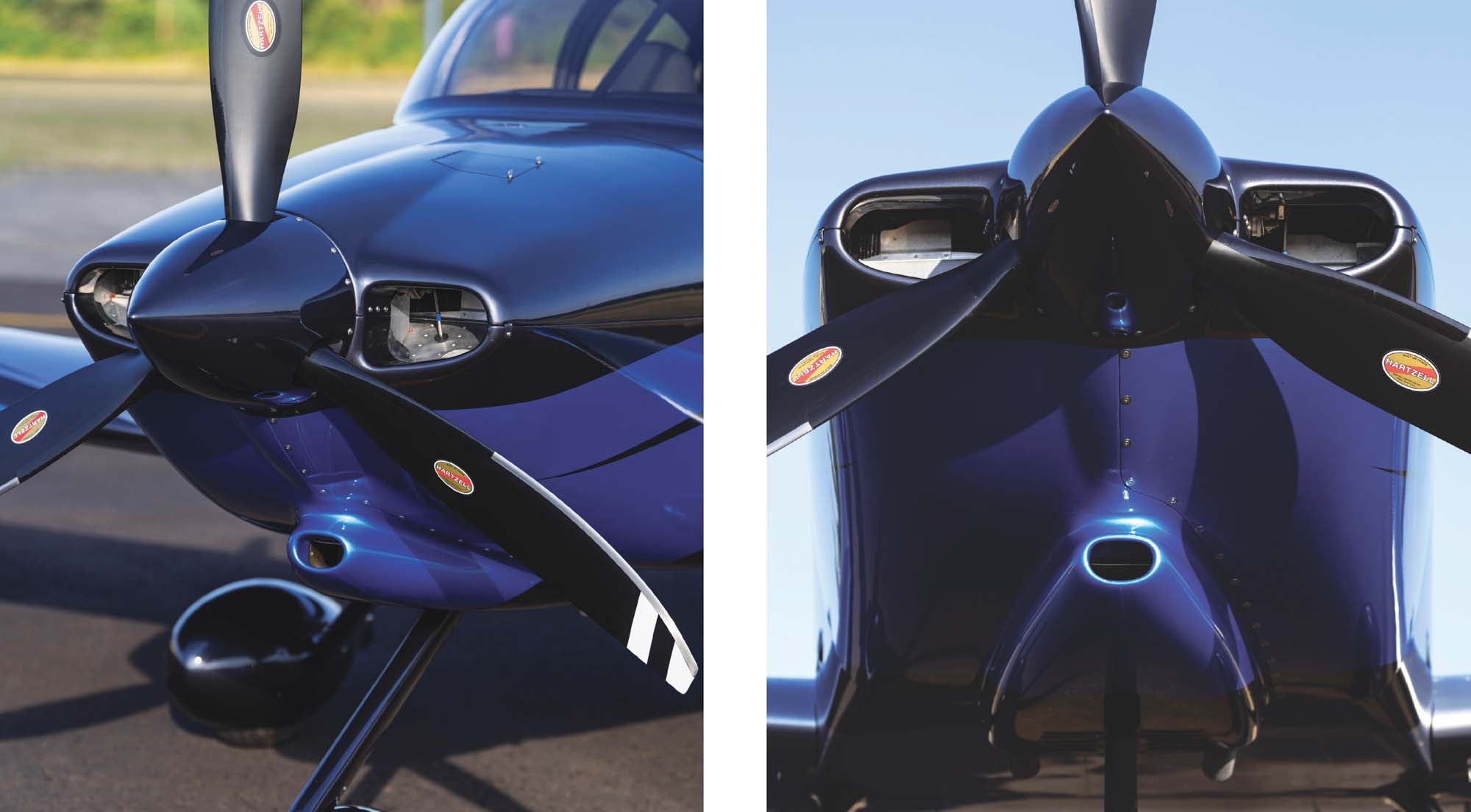
What the Hartzell Raptor does really well is save weight, roughly 20 pounds right on the nose. Fortunately, the RV-10 has a generous CG range, but builders intending to use this prop from the start will want to take that into consideration when figuring out where the other heavy stuff goes. Van’s intends to replace the existing Odyssey battery behind the baggage bay in the 10 with an EarthX, which will help move the CG a bit forward and further reduce weight. While that hasn’t been done yet, Van’s estimates that the total weight gain of N410RV after all the modifications—and make no mistake that the interior is a radical upgrade—will be in the neighborhood of 11 pounds. Credit the new prop and other lightweight components for that very reasonable figure.
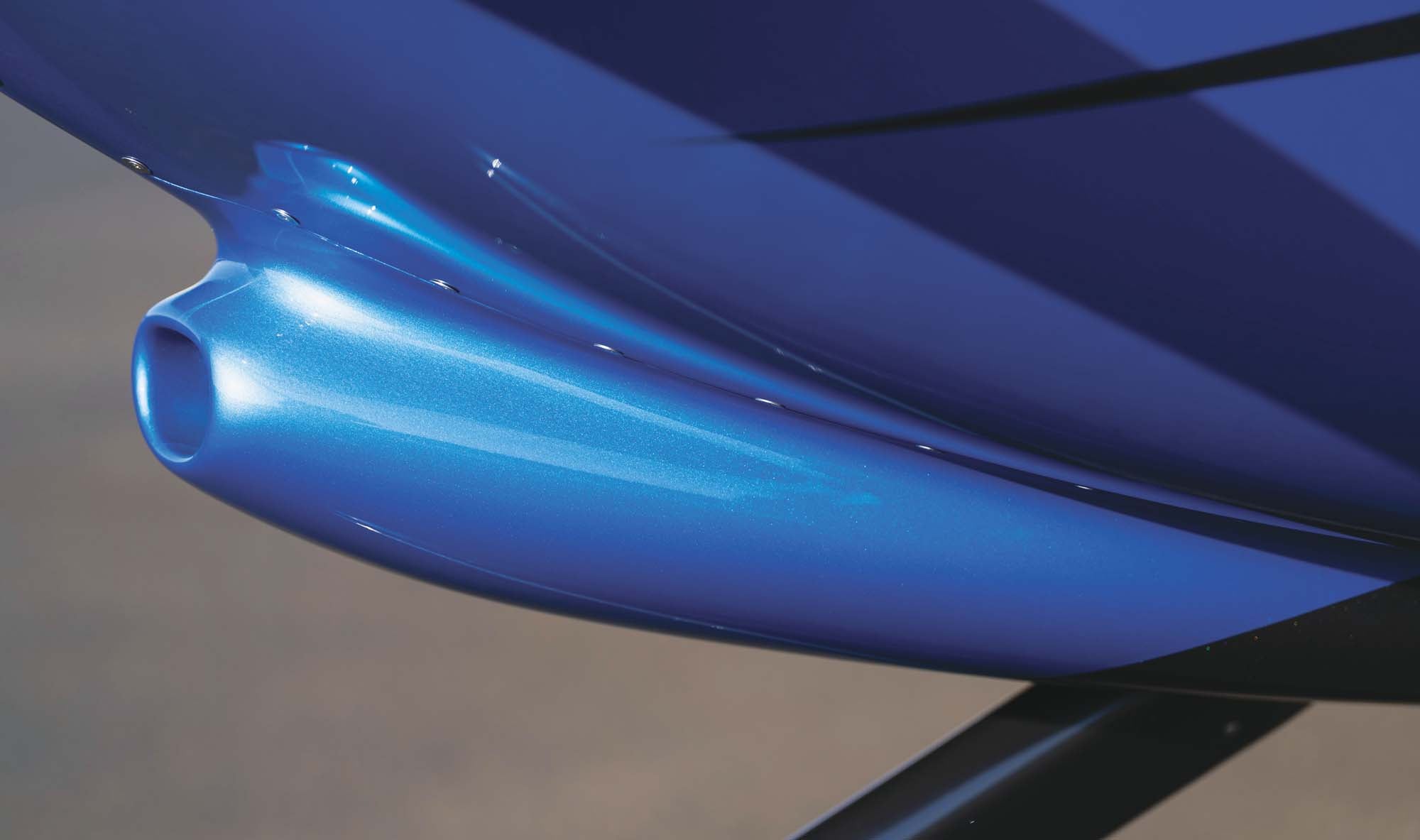
You RV-10 builders with three-blade props can guess the next step: a modified lower cowling. Yes, removing a cowling with the conventional horizontal split at the rocker covers can be a huge challenge with a three-blade prop. Van’s solution was daringly simple: Cut a line from the spinner opening to follow the centerline downward and then have it swerve around the filtered air box beneath the engine. “There’s a flange that allows the cowling to overlap,” says Sam. “It was not too much effort, actually. We took about 17 hours to do the entire job using the exact same cowling that was on the airplane before.” He notes that recently retired but longtime Van’s fabricator Scott McDaniels came in to do the work. Nice to see Scott hasn’t lost his touch.
Once your eyes adjust to the wicked paint scheme, you might notice something different about the windows. In the normal RV-10, the windows are bonded into the fiberglass cabin top and then the edges glassed over to create a seamless transition to the rest of the structure. In use, that can lead to cracking as the fiberglass and plexiglass expand and contract at different rates. The revised 10 has those exterior seams milled out and a flexible adhesive applied in between. Van’s is looking at other ways to mount the windows that allows some float for expansion and contraction. On N410RV, this adhesive is dark and none too noticeable unless you know what you’re looking for. (Sorry, did I ruin it for you?)
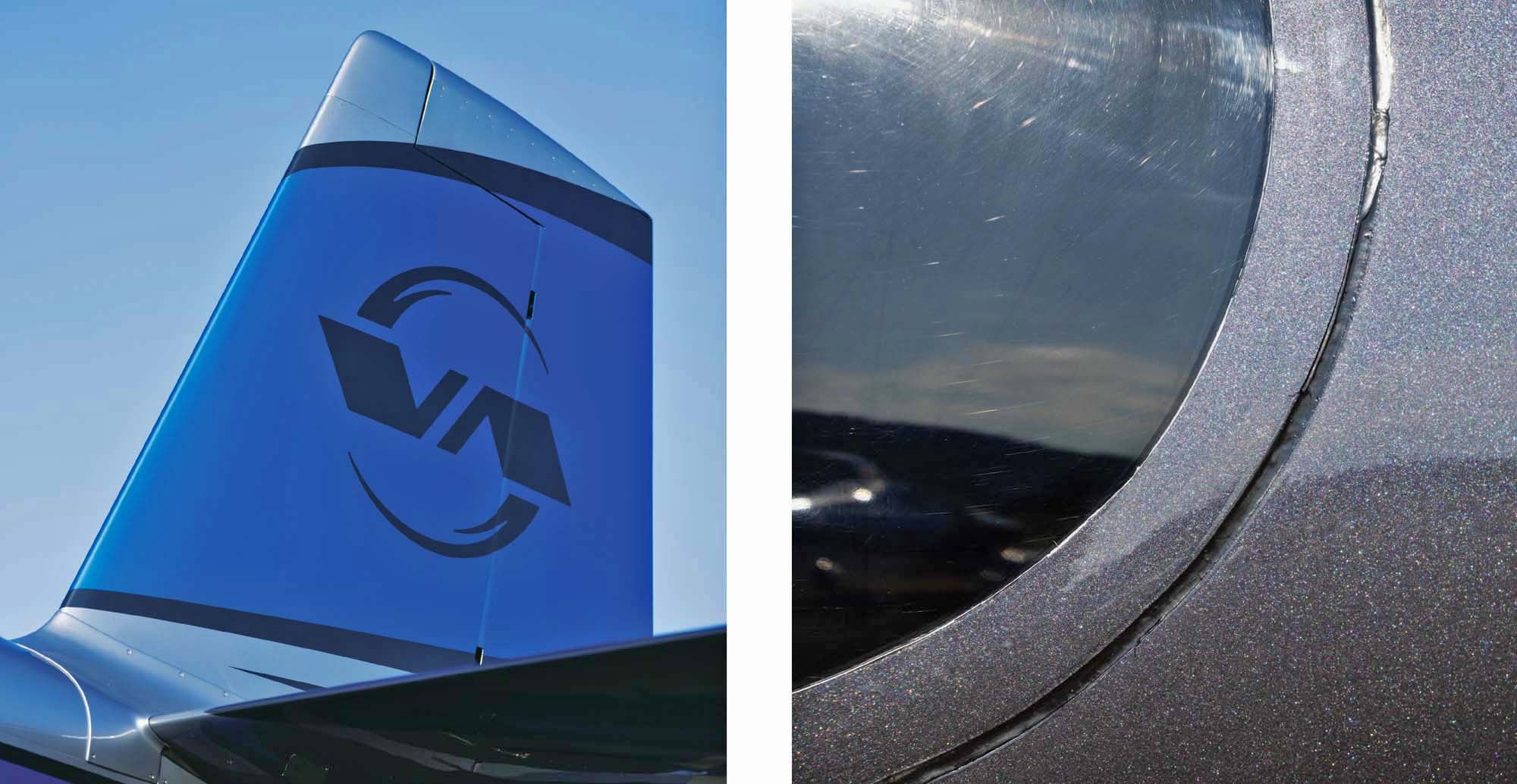
Let’s Go Inside
Sam continues, “The panel is unchanged but we added an Aerosport leather-covered glareshield. It comes 95% complete; all you need to do is cut holes for defrost fans and Velcro it in place. It fits really nicely.” Aerosport, in case you’re not familiar, is Aerosport Products of Canal Winchester, Ohio, a purveyor of dozens of mods for RV-10s and other RVs. Van’s liberally raided the Aerosport’s catalog for the RV-10 refurb.
“The seats are a major change,” says Sam. “We have designed and are building the frames in house with the foam supplied by Flightline Interiors. The leather upholstery is provided by Aerosport.” Moreover, the standard RV-10 rear seats, which are square-topped like those found on the two-seaters (in part to allow easier access to the baggage area behind), are replaced with taller-backrest models that mirror the shape of the front two.
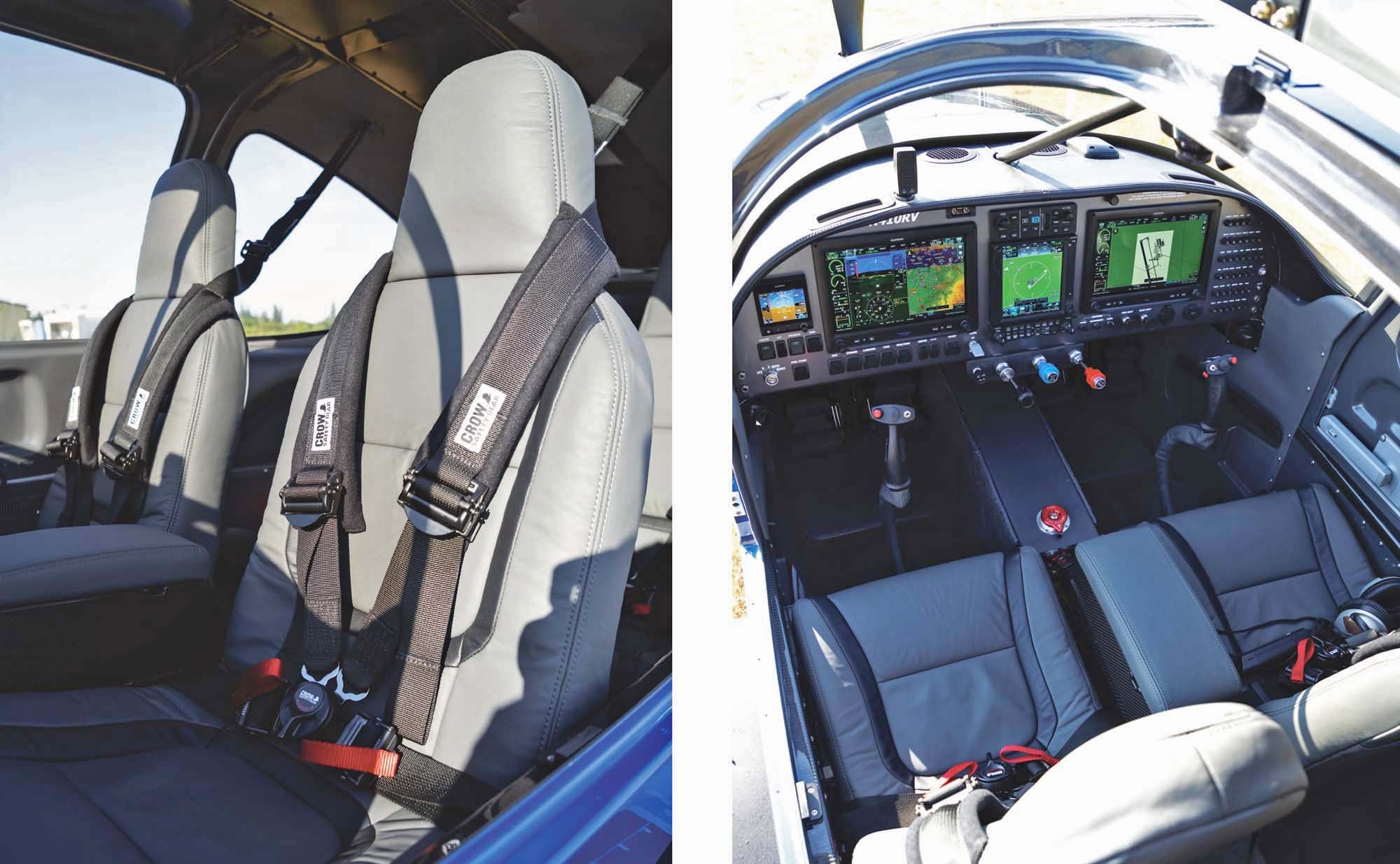
Those are some of the most obvious changes but the more you look the more you see. Glance up and you’ll find Aerosport’s carbon fiber center console with additional cooling vents. These are fed from two new small NACA ducts in the fuselage sides aft of the baggage hold. They’re connected to a servo-controlled shutoff valve and then to the overhead. Rather than relying on the local eyeball valves to stop the flow, you can shut it off at the source to prevent chilly leaks in the wintertime. Unless you have air conditioning (available through Airflow Systems for the RV-10, by the way), you’ll want all the ventilation you can get. This system is surrounded by a new headliner from Aerosport.
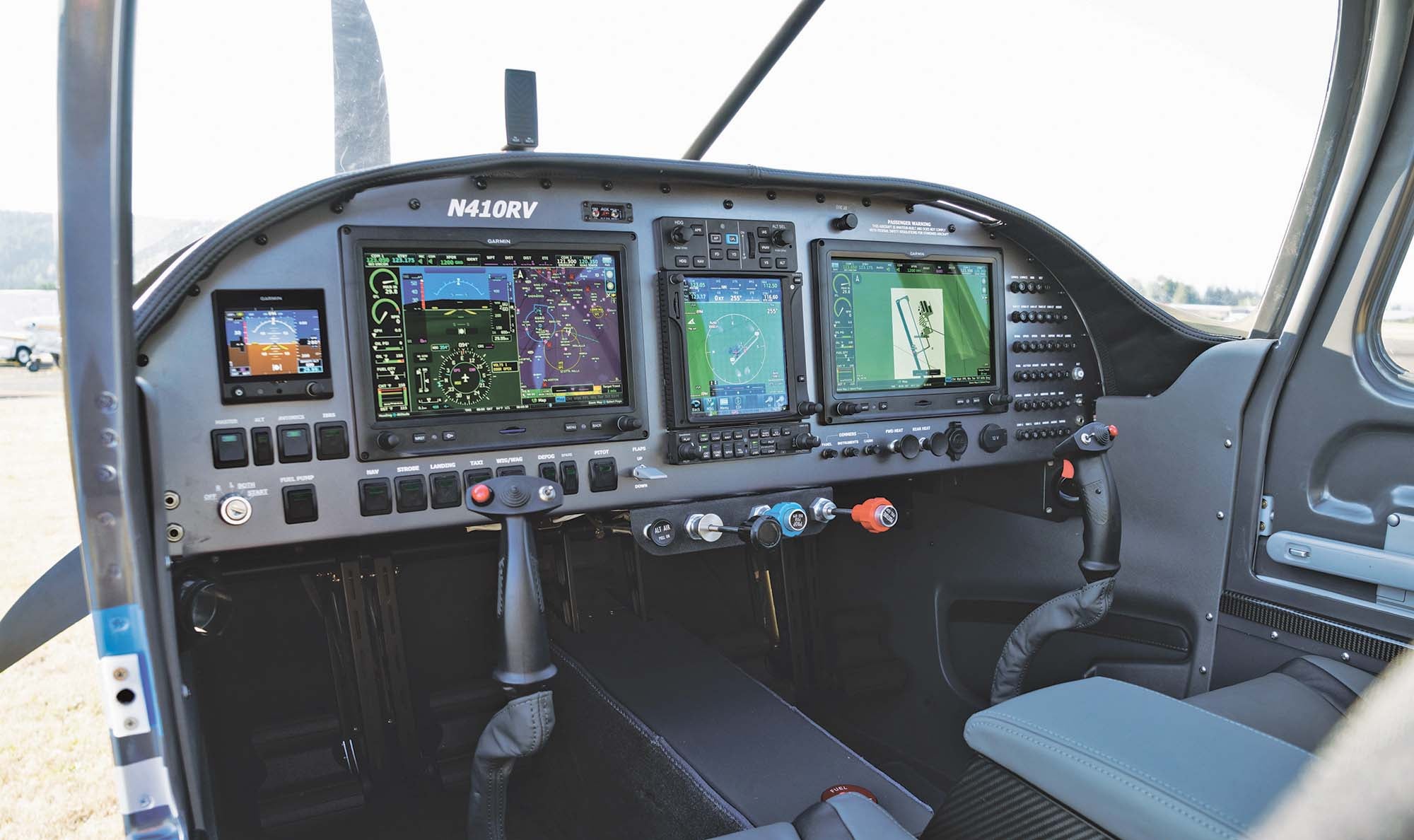
Continuing on: Aerosport provides a full carpet set that goes beyond the standard footwell arrangement to cover the fuselage sides and baggage compartment. A plastic interior kit is made up of molded plastic panels. “They came really close to shape,” Sam said. “We had them trimmed and installed in a day and a half.” And then there are the little niceties like the Aerosport seat-latch extensions, which put the front-seat slider releases near the front of the lower cushion so that you don’t have to dig around beside the seat cushion to find them. All four seat belts are Crow rotary-release four-point systems. In general, the goal was to improve interior comfort and to keep the bare painted-metal surfaces to a minimum. Van’s estimates that the retail value of the interior rework (less labor, of course) is around $16,000.
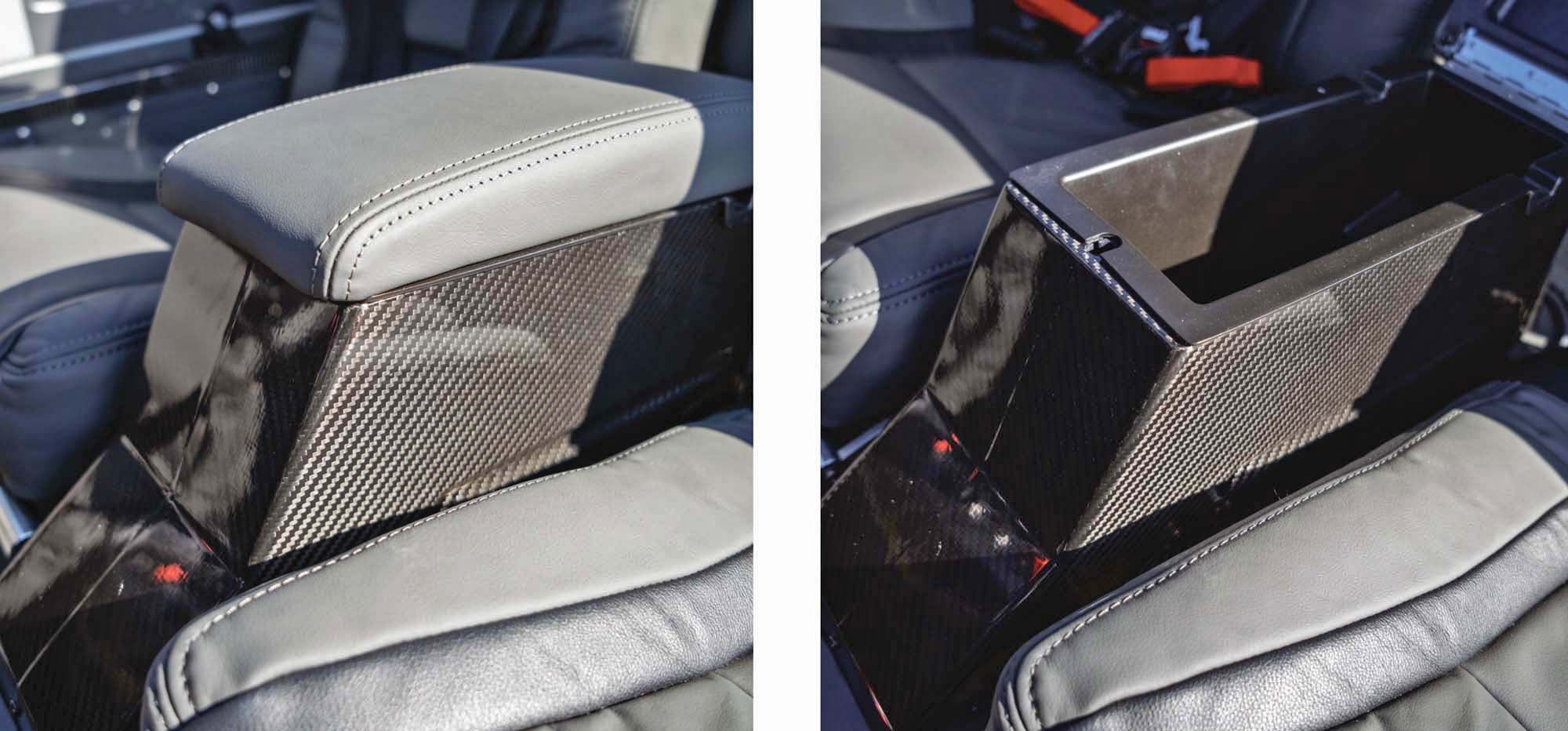
Mind the Rudder
Control Approach provides a kit that will be immediately noticeable to RV-10 owners. Typically, the RV-10 has simple metal rudder pedals hung from an overhead pivot (behind the panel) with vertical bars aside each pedal. The brake cylinders are on the weldment facing the pilot, with the lines running up and away. As a result, the pedals are set back slightly from the weldments and so it’s not uncommon to find the hardware in your way. This was a straightforward approach to rudder pedals and toe brakes but not as elegant as the Control Approach, ah, approach. These use a single down tube with cast pedals and move the brake cylinder to the back, where it’s out of the way. The CA pedals require minor modifications of the longitudinal center tunnel since the rudder cables now go through there instead of following the sidewalls. Van’s also fitted a set of Alaska Gear Company wheels and brakes, which it’s interested in testing longer term.
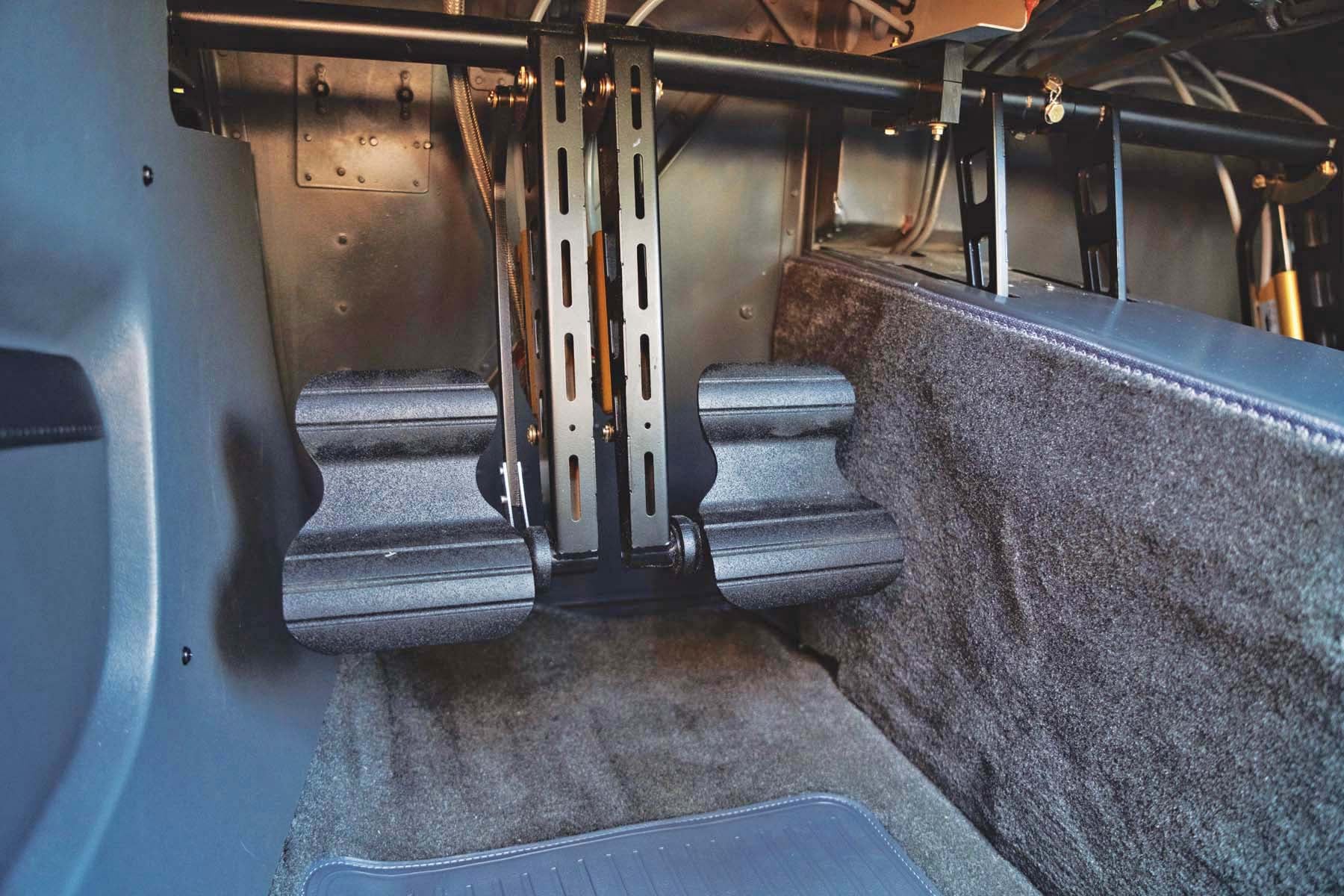
Is there a new love affair between Van’s and the aftermarket on the horizon? Hard to say but the refurbishing of N410RV is a public acknowledgement of the aftermarket’s value. With the company’s new management comes a recognition that building an airplane involves a complicated and interconnected ecosystem. Builders are responsible for more than what they get in the kit crate, especially on upmarket, family-oriented airplanes. And it leaves open the possibility of collaboration that could mean both better airplanes but also better-finished homebuilts.
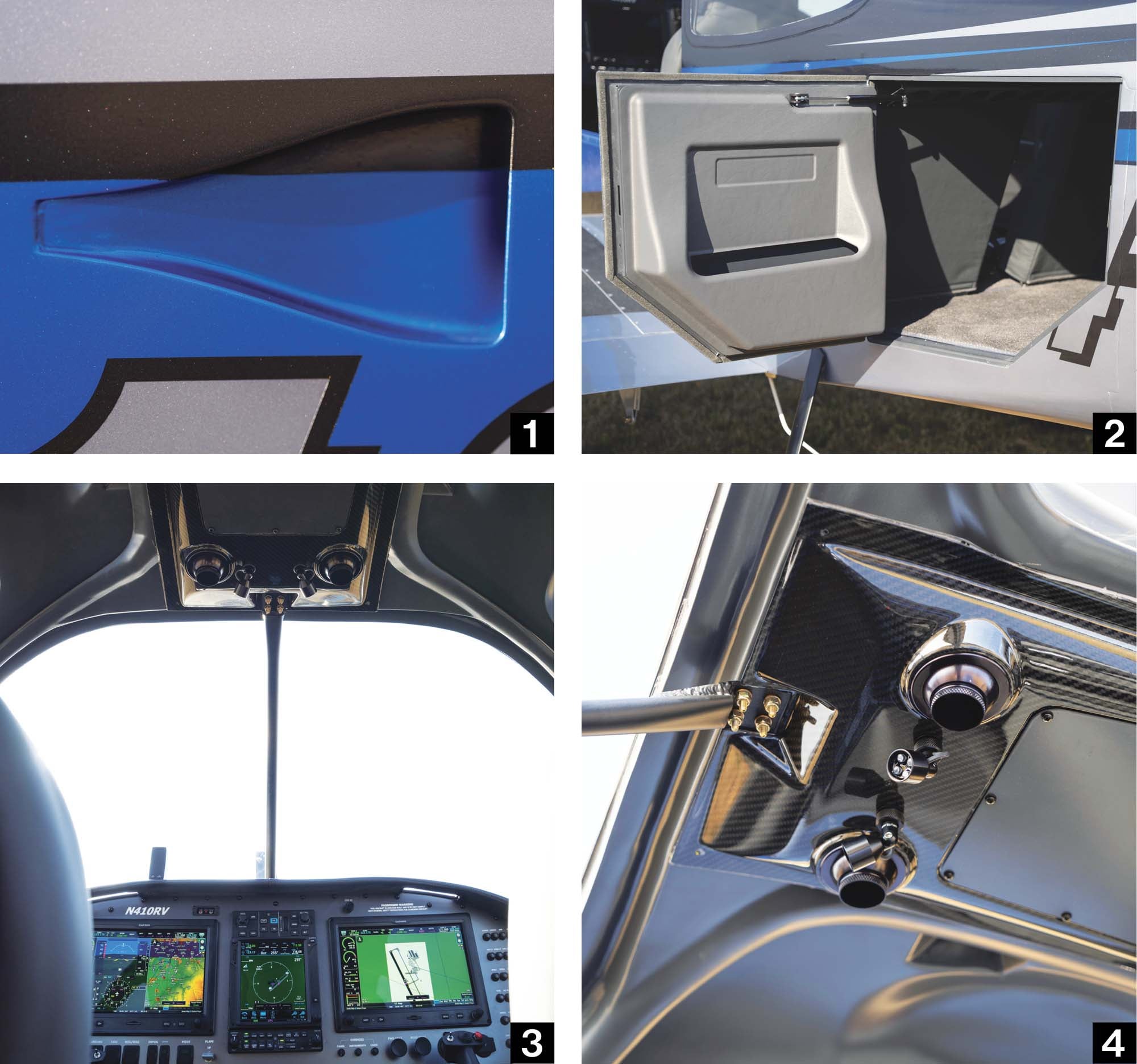














This is, in my opinion, the perfect cost to benefit ratio aircraft for the choice of a family plane!
In Brazil, thanks to our CAA jump ahead in the MOSAIC solution, the RV-10’s have already been certified as a Part 21.190 LSA and are a great success!
Hope you folks in US sort out the final MOSAIC rules ASAP, so that you can also profit from a wonderfull 4 place SLSA airplane, for a reasonable amount of money!